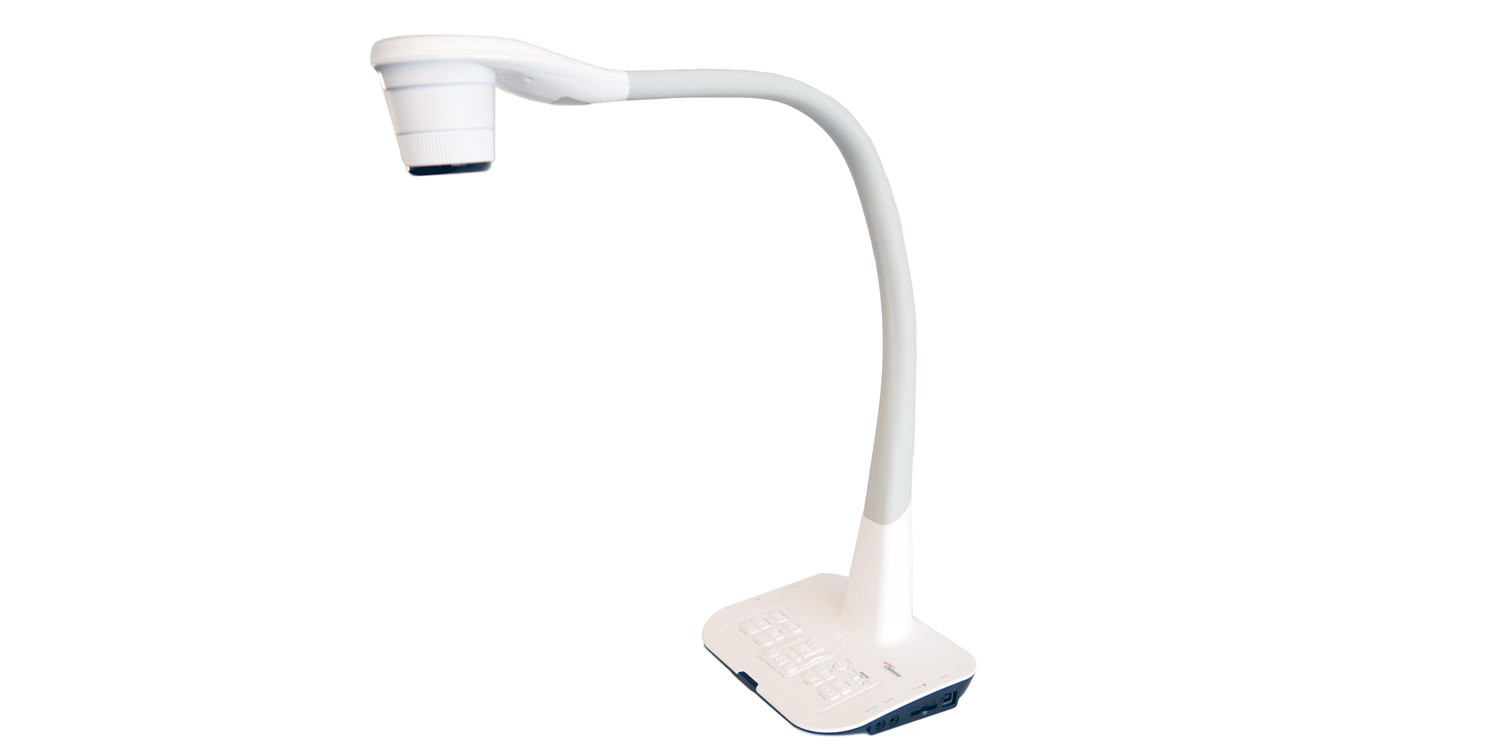



















£529.00*
- Camera resolution 13 MP
- Focus type Manual & automatic focus


Product information
13MP document camera with 17x optical / 8x digital zoom
The Optoma DC460 allows you to present images in real time to a large audience when connected to a suitable large screen. Sharing video content from a distance has never been easier. Simply connect to one of the video conferencing tools (via a PC) to enable sharing to remote viewers. It's a great way to create an interactive learning or demonstration space that's perfect for classrooms, boardrooms and lecture theatres.
Experience the following highlights:
- 13MP high definition camera
- 17x optical zoom for viewing
- the smallest details
- Built-in microphone and speaker
- 4K resolution
High-resolution document capture
With a 13-megapixel CMOS sensor and 4K output resolution, the Optoma DC460 document camera enables razor-sharp, high-resolution document capture. Whether it's text documents, images or three-dimensional objects, this camera captures every detail with impressive clarity.
Flexible focusing
The camera offers both automatic and manual focus to ensure you always get the perfect image. Whether you want to capture a flat document or a three-dimensional object, the Optoma DC460 allows you to adjust the focus to suit your needs.
Document capture and video recording
With the ability to capture documents and record video, you can not only capture documents, but also create dynamic presentations. This is ideal for teachers, lecturers and business professionals who want to take their presentations to the next level.
Bright LED illumination
The 3-level LED illumination ensures optimal illumination of your documents. Whether you are working in a well-lit room or in a darker environment, the Optoma DC460 ensures that your documents are always clearly visible.
Security and connectivity
The Optoma DC460 has a Kensington Lock port to ensure the security of your camera. In addition, it offers a variety of ports including USB 2.0, HDMI, VGA and Audio 3.5mm to ensure seamless connectivity.
Compact and user-friendly design
With compact dimensions of 200 x 160 x 530 mm, the Optoma DC460 is easy to transport and set up in any room. The included remote control allows for convenient control, while the anti-glare film prevents unwanted reflections.
The Optoma DC460 document camera offers first-class document capture and presentation in 4K quality. With its flexibility, ease of use and versatility, it is the ideal solution for educational institutions, businesses and presentations that demand the highest standards of document presentation. Capture documents in impressive quality and present them professionally and effectively with the Optoma DC460.
Technical data
| Name | Optoma DC460 document camera |
|---|---|
| Article number | 1000030004 |
| GTIN/EAN | 5055387668195 |
| Manufacturer SKU | DC460 |
| Model name | DC460 |
| Brand | Optoma |
| Product Type | Visualizer |
| Frames per Second | 30 fps |
| Focus type | Manual & automatic focus |
| Camera resolution | 13 MP |
| Camera sensor | 1/3.2" CMOS |
| Inputs | 1x HDMI , 1x USB-A , 1x VGA |
| Outputs | 1x HDMI , 1x VGA |
| Product width | 20 cm |
| Product height | 53 cm |
| Product depth | 16.5 cm |
| Weight | 2 kg |
| Colour | White |
| Delivery contents | HDMI Cable , Microscope Adapter , Power cable , USB cable |
| Condition | New |
| Warranty type | Bringin service Service and support information |
Product safety
| Person responsible for the EU |
|---|
| Optoma Deutschland GmbH |
| Am Nordpark 3 |
| 41069 Mönchengladbach |
| Germany |
| info@optoma.de |



